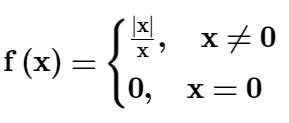Evaluate:
To evaluate the limit
limx→0(ax+bx+cx3)2x,(a,b,c>0)
we can follow these steps:
Step 1: Identify the form of the limit
First, we substitute x=0 into the expression:
a0+b0+c03=1+1+13=1.
Thus, we have:
limx→0(ax+bx+cx3)2x=1∞,
which is an indeterminate form.
Step 2: Rewrite the limit
To resolve the indeterminate form 1∞, we can use the exponential limit property. We rewrite the limit as:
limx→0(ax+bx+cx3)2x=elimx→02x(ax+bx+cx3−1).
Step 3: Simplify the expression inside the limit
Now, we need to find:
limx→02x(ax+bx+cx3−1).
Using the fact that ax≈1+xloga as x→0, we can expand ax,bx,cx:
ax≈1+xloga,bx≈1+xlogb,cx≈1+xlogc.
Thus,
ax+bx+cx≈3+x(loga+logb+logc).
Now substituting this back into our limit gives:
ax+bx+cx3≈1+x(loga+logb+logc)3.
Step 4: Substitute back into the limit
Now we have:
ax+bx+cx3−1≈x(loga+logb+logc)3.
Thus, we can write:
limx→02x(ax+bx+cx3−1)≈limx→02x⋅x(loga+logb+logc)3=limx→02(loga+logb+logc)3=2(loga+logb+logc)3.
Step 5: Final limit evaluation
Now substituting this back into the exponential limit gives:
limx→0(ax+bx+cx3)2x=e2(loga+logb+logc)3.
Using the property of logarithms, we can simplify this to:
=elog((abc)23)=(abc)23.
Final Answer
Thus, the limit evaluates to:
limx→0(ax+bx+cx3)2x=(abc)23.
First, we substitute x=0 into the expression:
To resolve the indeterminate form 1∞, we can use the exponential limit property. We rewrite the limit as:
Now, we need to find:
Now we have:
Now substituting this back into the exponential limit gives:
Thus, the limit evaluates to:
Similar Questions
Knowledge Check
The value of limx→0(ax+bx+cx3)2/x,(a,b,c>0) is
A(abc)3BabcC(abc)1/3DNone of theseThe value of limx→0{ax+bx+cx3}1/x, is
AabcB(abc)1/3C13abcDnone of theseEvaluate: limx→0tanx−sinxx3
A1B2C12D0

